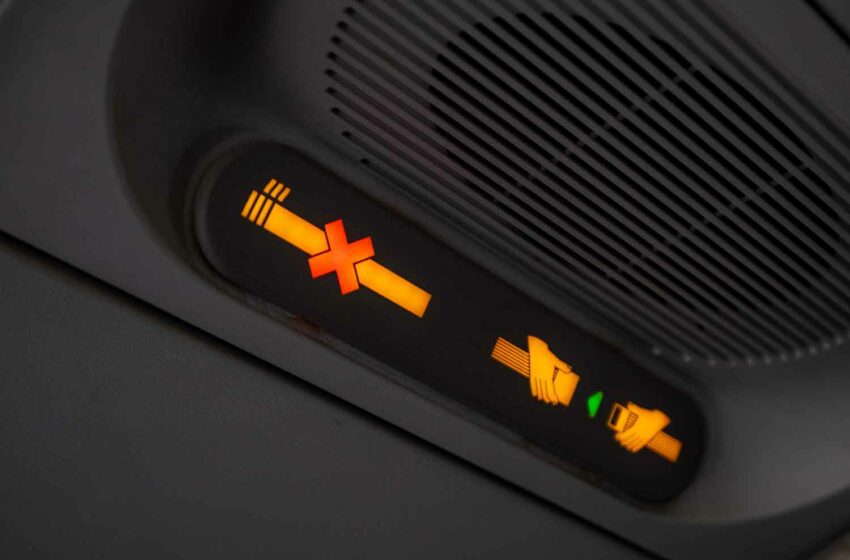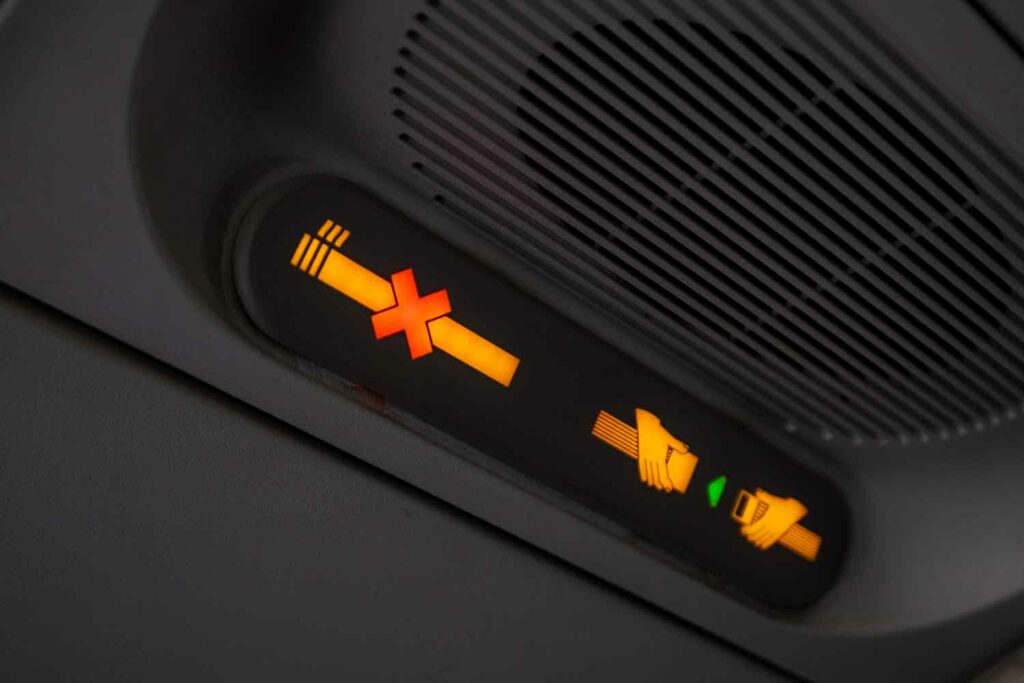FAA: In-Flight No-Smoking Signs Can Stay on Forever
- Featured News This Week
- October 23, 2024
- 0
- 2 minutes read


The U.S. Federal Aviation Administration (FAA) on Oct. 22 ended a requirement that aircraft have an off switch for the No Smoking signs in their aircraft, reports The New York Times. The change comes decades after smoking was banned on commercial flights in the U.S.
That obsolete requirement had become “time-consuming and burdensome” for airlines and airplane manufacturers to comply with, the FAA said in a rule enacting the change. In February, for example, United Airlines was briefly unable to use a handful of new Airbus planes because the “No Smoking” signs on board couldn’t be shut off. The issue was resolved after the FAA granted United an exemption.
Despite the fire hazard and health risks, airlines permitted smoking on their flights for decades. In 1973, the federal government required airlines to seat smokers and nonsmokers in separate sections, which did little to protect passengers. In 1988 the FAA banned smoking on domestic flights of less than two hours. Two years later, it expanded the ban to flights under six hours, which covered most domestic routes.
In-flight smoking was at the center of major tobacco lawsuit in the 1990s, when lawyers sued tobacco companies on behalf of flight attendants suffering from the effects of secondhand smoke. In 1997 the tobacco industry agreed to pay out $300 million to fund the establishment of a research institute. It also agreed to support a federal smoking ban on international flights, which the FAA passed in 2000, extending the ban from a decade earlier to permanently block smoking on any flight landing or departing from a U.S. airport.
Other countries took similar steps and, with few exceptions, smoking is now prohibited on almost every flight worldwide. In the rule that took effect Oct. 22, the FAA said the no smoking signs “continue to be an effective reminder for the traveling public.”
